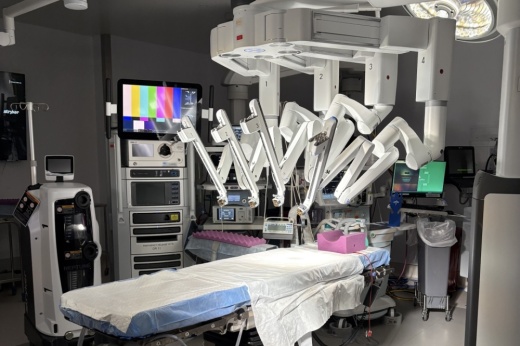How it happened
According to hospital officials at Baylor Scott & White-Grapevine, robotic surgeries were introduced at the hospital in 2008.
Dr. Sina Matin, one of the surgeons who works with the robotics platform at Baylor Scott & White Medical Center-Grapevine, said the robotic surgeries—which are also called robotic-assisted surgeries—are used on minimally invasive procedures through the use of a computer console, which controls very small instruments and a high-resolution camera attached to robotic arms.
“Some of the ways we use robotic surgery at Baylor Scott & White Medical Center-Grapevine include procedures that previously required more complex surgeries with longer recovery times,” he said.
Some of these procedures include:
- Orthopedic surgeries, which focus on joint replacements
- Lung biopsies, in which robotics are used to take tissue samples from the lungs
- Esophageal and other chest surgeries
- Gynecology and urology
- Colorectal surgeries, which focus on the colon area
This year, the surgical team at Baylor Scott & White-Grapevine surpassed more than 10,000 procedures with the aid of the robotics platform since the program began 18 years ago.
With the robotics platform, surgeons have greater precision and control over the surgical instruments than with human movement alone, according to Baylor Scott & White’s website.
This allows multiple possible benefits to a patient's recovery process, including:
- Less pain/blood loss
- Less scarring
- Shorter hospital stay
- Lower rate of complications
- Fewer surgical complications
- More precise implant placement
“While not every patient’s surgery can be performed with the help of robotic systems, a growing number of procedures are using the technology,” he said.





